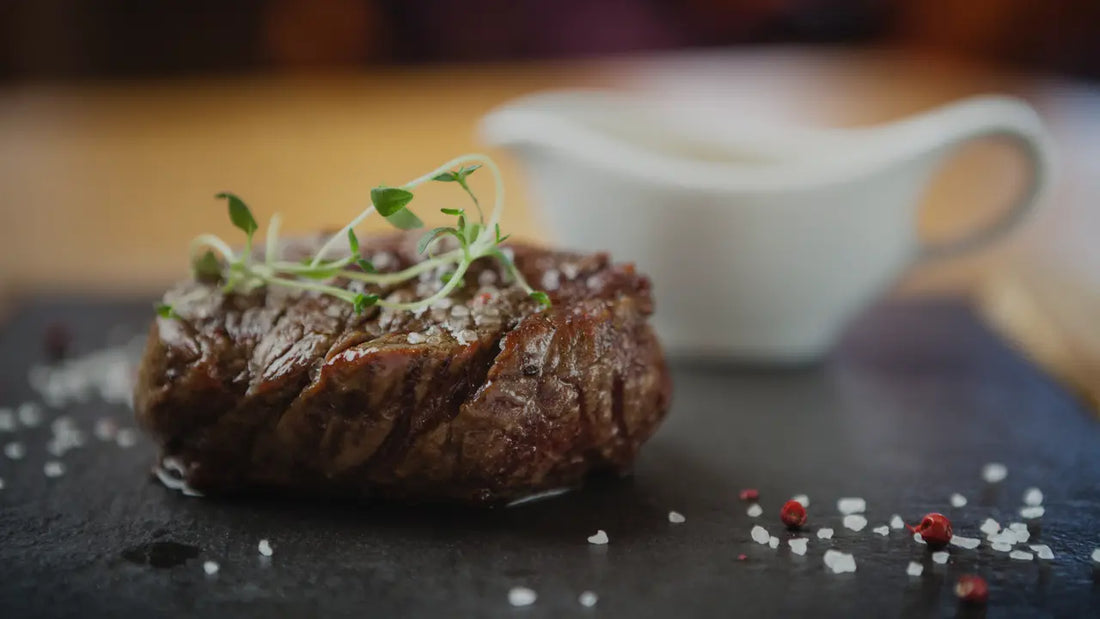
Ostrich on the Menu: A Chef's Guide to The Premier Exotic and Sustainable Meat
Share
Exploring the world of exotic meats can be a thrilling adventure for any chef looking to elevate their restaurant’s menu. Among the most intriguing options is ostrich meat, renowned for its health benefits, unique taste, and sustainability. If you’re curious about how to introduce this exotic addition into your culinary lineup, this guide will walk you through everything you need to know.
Why Ostrich? A Primer on This Exotic Meat
The allure of ostrich meat in the culinary world extends beyond its exotic status. Renowned for its high nutritional value, ostrich meat presents a robust flavor profile that is both unique and reminiscent of traditional red meats. Chefs and gastronomes alike are drawn to its versatility and sustainability, positioning ostrich not just as an alternative, but as a superior choice in the exotic meat market. The curious blend of novelty and familiarity makes ostrich an inviting option for menus aiming to impress and entice.
The Health Benefits of Ostrich Meat
Ostrich meat stands out in the culinary landscape not only for its taste but also for its remarkable health benefits. It is a rich source of protein, iron, zinc, and vitamin B12, all essential for maintaining good health. Its low fat and cholesterol levels make it an attractive alternative for health-conscious diners. The meat also boasts a high content of omega-3 fatty acids, contributing to a heart-healthy diet. Chefs can appeal to a wide audience by incorporating this nutritious, lean red meat into their menus, offering a guilt-free indulgence that doesn’t skimp on flavor.
Sourcing Ostrich: Tips for Restaurant Chefs
For chefs eager to include ostrich on their menus, sourcing quality meat is crucial. It’s important to partner with reputable farms that adhere to high standards of animal welfare and sustainable farming practices. Superior Ostrich prides itself on offering premium ostrich meat, raised without hormones or unnecessary antibiotics, ensuring chefs receive ingredients of the highest caliber. Engaging with suppliers who share your commitment to quality and sustainability can not only enhance your dishes but also align your restaurant’s ethos with responsible and ethical food sourcing.
Culinary Techniques and Tips for Cooking Ostrich
Ostrich meat’s versatility lies in its ability to be cooked using various techniques. Whether grilled, roasted, or seared, it requires careful handling to preserve its tenderness and rich flavor. Due to its lean nature, it’s best cooked to medium-rare or medium to avoid toughness. Introducing marinades or rubs can enhance its natural taste, offering a canvas for culinary creativity. For those new to ostrich, resources like Superior Ostrich provide valuable cooking tips and recipes to get started. Embracing these techniques can elevate your menu, providing guests with a memorable dining experience.
Innovative Ostrich Dish Ideas to Inspire Your Menu
Incorporating ostrich into your menu opens a gateway to culinary innovation. From ostrich burger sliders to juicy ostrich tenderloin steaks, the possibilities are endless. Ostrich can easily replace traditional meats in classic dishes, offering a healthier and more exotic twist. Chefs have found success with creations such as ostrich tartare, smoked ostrich carpaccio, and even ostrich stew. These dishes not only add intrigue to your menu but also cater to the growing demand for unique dining experiences. By experimenting with ostrich, chefs can craft distinct and appealing offerings that stand out in a competitive market.
Navigating Customer Perceptions and Introducing Exotic Meats
Introducing exotic meats like ostrich to a traditional menu can come with challenges, primarily concerning customer perceptions. Education plays a key role in overcoming hesitancy. Providing information on ostrich meat’s health benefits, flavor profile, and sustainability can encourage diners to try something new. Engaging storytelling about the source and preparation of the meat adds an element of interest and trust. Offering ostrich as a specialty dish can also ease guests into the idea, making exotic meats less daunting and more appealing.
Sustainability and Ethical Considerations in the Exotic Meat Market
Sustainability and ethics play a significant role in the exotic meat market, with ostrich farming setting a positive example. Ostriches have a lower environmental footprint compared to traditional livestock, requiring less land, water, and feed. This aligns with the growing consumer demand for eco-friendly dining options. By choosing to serve ostrich meat, restaurants not only offer a delicious and unique protein but also contribute to a more sustainable and ethical food system. It’s a compelling narrative that chefs can share with their patrons, reinforcing the alignment of their culinary practices with broader environmental and ethical standards.
Embracing the Adventure of Ostrich in Culinary Innovation
Incorporating ostrich into your menu isn’t just about offering new flavors; it’s a statement about innovation, sustainability, and the courage to explore the culinary unknown. It’s an invitation to your guests to join you on an adventurous dining experience, one that respects environmental balance while delighting the palate. As the exotic meat market continues to expand, ostrich stands out as a versatile, nutritious, and eco-friendly choice that can set your offerings apart. Embrace the challenge, and let your creativity lead the way to memorable, exciting dishes that will keep patrons coming back for more. Discover more about our offerings and join the revolution at Superior Ostrich.
